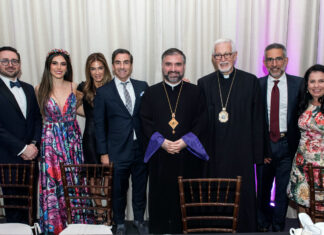WASHINGTON – Istanbul-based Turkish-Armenian journalist, community activist and musician Bagrat Esdukian wants to move to Armenia and settle there. The reason why he would not do that is because he feels he needs to remain in Turkey to continue the fight for the rights of Armenians.
During his recent presentation at St. Mary Armenian Church in Washington, D.C., Esdukian spoke of the history and the rights of our compatriots in Turkey, Turkish-Armenian relations, and the tragic assassination of Hrant Dink, the founder and first editor of the Turkish-Armenian Agos weekly.
It was prominent British columnist Robert Fisk, the recipient of the Armenian Mirror Spectator’s special award of 2017, who after the tragic murder of Dink in January 2007 referred to Dink as the “1,500,001st victim of the Armenian Genocide.” As Esdukian stated, this concept was picked up later by many.
Somewhat like US presidential statements on the Armenian Genocide’s day of remembrance, the Turkish-Armenian community also used to generally refer to the tragic events of 1915 as “massacre,” “deportation,” and Medz Yeghern (Great Calamity), and in this fashion avoid use of the term genocide. The first Turkish Armenian to publicly refer to 1915 as genocide on Turkish television was Dink, Esdukian stated in his speech. He added that nowadays the use of the term in public is becoming more common among Turkish Armenians. According to this Istanbul-Armenian community representative, thanks to Dink’s efforts an increasing number of non-Armenians in Turkey is beginning to realize that a terrible injustice had happened to Armenians a century ago.
“If we imagine the Turkish Republic to be a brick wall, then the Armenian Cause is the wrongly installed brick of the wall. However, many in Turkey fear that if they try to fix that brick the entire construction may come down,” Esdukian related in a figurative fashion. Hrant Dink attempted to move or fix the brick.
Esdukian resisted attempts to refer to the Armenian people of Turkey as a diaspora. “Because we lived in that geography and city for thousands of years, before many other ethnic groups which may be numerically superior now, arrived” explained the Turkish-Armenian intellectual.









